How to Care for a Hoya Plant Outdoors

Hoyas are just as easy to care for outdoors as they are indoors. Last week’s post was all about growing Hoyas as houseplants so now it’s time to head outside. There are many similarities to growing them in both situations but a few differences come into play. These care tips for growing Hoya plants outdoors will help you out whether yours grow outdoors year round or just for the warmer months.
I grew Hoyas outdoors in my Santa Barbara garden and now have 1 growing on my side patio in Tucson. These are 2 different climates but my Hoyas did/do well year-round in both. If you live in a temperate climate then these tips are for you. If not, then perhaps your Hoyas will be able to summer outdoors and you’ll find this useful.
I’ve mainly seen them used outdoors as hanging plants. My Variegated Hoya grows in a tall, narrow pot & is trained to grow over bamboo hoops. You could also use them in a mixed planting, train to grow on a trellis or simply sit on a table.
Size:
They’re sold in 4, 6, 8, & 10″ grow pots; usually with a hanger. My Hoya carnosa variegata which grows outdoors has 4-5′ trails. I saw a Hoya growing in a decorative hanging pot in Carpenteria, CA and the trails must have been 6′ long. In their natural environment many grow as climbing vines.
Hoya Plant Varieties:
There are many species & varieties of Hoyas sold on the market. You can find at least 1 that catches your fancy because the foliage comes in a variety of shapes, sizes, colors & textures. The ones I’ve seen most often are H. carnosa, H. carnosa variegata, H. carnosa compacta , H. Kerrii, & H. obovata.
Common names for the Hoya Plant:
Different species & varieties have different common names. As a whole, they’re called Wax Plant, Wax Vine or Honey Plant.
Growth rate:
Mine have always grown at a moderate rate outdoors – faster than mine grows indoors. What I’ve found is that different Hoyas grow at slightly different rates. My Hoya carnosa variegata grows faster than my Hoya obovata but then again it’s quite a bit older.
Here is everything you need to know about growing hoyas outdoors!
Exposure:
Hoyas need bright, natural light with shelter from hot sun to do their best. Mine sits on a covered patio with a north, east & west exposure. The plant is next to the sliding glass doors where very little direct sun hits it.
We get a lot of sun all year long in Tucson so that’s the sweet spot for mine. In the summer when the sun is the strongest, I hang semi-sheer curtains to protect it & my fleshy succulents from any rays which might hit in the late afternoon. Yes, I’m a crazy plant lady but the curtains give a sultry harem effect too!
In Santa Barbara my Hoyas got morning sun but were oftentimes sheltered by a light layer of fog. To sum it up, bright shade is best & avoid any hot, direct sun. Your Hoyas will fry in no time flat.
Watering:
I water mine when it has almost dried out. Although Hoyas aren’t technically succulents, they’re succulent-like with those fleshy, waxy leaves. In summer I water it once a week & in winter it’s every 2-4 weeks.
Although many are vines & shrubs in nature, some are epiphytic just like bromeliads & orchids. Either way, Hoyas don’t like their feet to be consistently moist. It’s better to underwater them than to over water.
If you’re in a humid climate, you’ll probably need to water less often. And as I said above, back off on the watering frequency in the winter months.
Temperature/Cold Tolerance:
We get 8-10 nights every winter which dip a bit below freezing here in Tucson. If the temps are going to drop below 35 F then I’ll lay a doubled sheet over my Hoya topiary & that seems to protect it just fine. This is my Hoya carnosa variegata I’m talking about & I’m not sure if different Hoyas vary in regards to cold tolerance.
On the other end of the scale, Tucson regularly gets above the 100 F in the summer. My Hoya is quite tolerant of the wide temperature swings & is currently loaded with fresh new growth in November. Quite the tough plant I’d say!
Humidity:
Hoyas are native to the tropics. Despite this, mine here in hot dry Sonoran Desert is doing great. I do hose it down every 3 weeks & the foliage seems to enjoy the temporary infusion of moisture.
How to Feed a Hoya Plant:
I’ve found that Hoyas aren’t that needy when it comes to fertilizing. Right now I feed all my container plants with a light application of worm compost followed by a light layer of compost over that every spring. Easy does it – I top dress a plant this size with 1″ of worm compost & 2″ of compost. In case you’re interested I also use this worm compost/compost blend to feed houseplants.
I can’t recommend a specific fertilizer because I’ve never used 1 for my Hoyas. Mine look just fine so I have no need.
Whatever you use don’t fertilize houseplants in late fall or winter because that’s their time for rest. Over fertilizing your Hoyas will cause salts to build up & can burn the roots of the plant. Be sure to avoid fertilizing a houseplant which is stressed, ie. bone dry or soaking wet.
Soil:
Hoyas, aka Wax Plants, love a rich mix with excellent drainage. All the mixes & amendments listed below are organic. I use this same mix for my Hoya houseplants too.
Potting Soil. I’m currently using Smart Naturals because of its high quality ingredients. It’s great for container planting, including houseplants.
Succulent & Cactus Mix. I use a locally produced succulent & cactus mix. Here’s an online option for you as well as this popular 1.
Compost. I use Tank’s local compost. Give Dr. Earth’s a try if you can’t find any where you live. Compost enriches the soil naturally.
Orchid Bark. I’ve found Hoyas love orchid bark. It ensures excellent drainage. You can also add charcoal instead if you’d like or a combo of both.
Worm Compost. This is my favorite amendment which I use sparingly because it’s rich. I’m currently using Worm Gold.
Coco Coir. This environmentally friendly alternative to peat moss is pH neutral, increases nutrient holding capacity & improves aeration.
This is the approximate ratio: 1/3 potting soil, 1/3 succulent & cactus mix & a 1/3 even blend of the orchid bark, coco coir & compost. I sprinkle in a few handfuls of the worm compost & also use a layer of this as topdressing as well as the compost.
Repotting/Transplanting a Hoya Plant:
This is best done in spring or summer; early fall is fine if you’re in a warmer climate like me. Hoyas like to grow a bit potbound so don’t rush to repot yours if it’s doing fine.
Regarding transplanting & repotting – don’t think your Hoya will need it every year. Like orchids they’ll bloom better if slightly tight in their pots so leave them be for a few years.
I hadn’t repotted my large variegated Hoya for 3 years & did so last year because the soil was way down in the pot. It’s in a very tall pot so I won’t repot it again for at least 7 years.
Pruning:
You can prune a Hoya to control the size, make it bushier, & to thin it out or remove any dead growth. I try not to prune off too many of short flowers stalks from previous years. That’s where the flowers will emerge from next season.
In other words, a hard pruning (which is sometimes necessary) will delay the flowering process.
Propagation:
Here’s an entire post on p ropagating Hoyas so click on for all the details. The condensed version: I’ve had great success with 2 of methods – propagating by stem cuttings in water & layering.
For layering you simply take a softwood stem of the plant (which is still attached to the mother) & pin it into a pot filled with light mix. Make sure the mix is thoroughly moistened. Most times you’ll see little roots appearing on the stems & that’s what you want to get on top of the mix.
Pests:
When grown outside Hoyas are susceptible to aphids. In spring the orange aphids appear like clockwork on the tender new growth of my Variegated Hoya so I gently blast them off with the garden hose. Also, keep your eye out for mealybugs & scale.
It’s best to take action as soon as you see any pest because they multiply like crazy.
Toxicity:
Ring the bells! Hoyas are one of the non-toxic plants. Just know that if your pet or child chews on the leaves or stems, it could make them sick.
Flowers:
Saving the best for last – Hoya flowers are beautiful! Their waxy, star-like blooms are intriguing & can be found in many colors, sizes & forms depending on the species of Hoya. The wonderful flowers are fragrant, especially in the evening.
Some bloom in the first year & others take a few years to establish before they bloom. My Hoya carnosa “variegata” took almost 3 years to bloom so be patient. And, it doesn’t bloom every year. I say Hoyas bloom when they feel like it!
How often they bloom seems to depend on the type of hoya, age of the hoya, & conditions they’re growing in. Don’t cut the old bloom stems off; let them remain on the plant so you get flowers next season.
If yours has never bloomed, it’s most likely not getting enough light.
The above care tips apply if you’re putting your Hoya outdoors for the summer. Just be sure to hose the plant off well (undersides of the leaves too) before bringing it back inside. You want to get any pests &/or their eggs off before bringing it back into your home.
Keep your Hoya out of hot sun to avoid burning.
Give your Hoya a shower every now & then. It keeps the gorgeous foliage clean & dust & dirt free. Besides, it’ll temporarily up the ante on the humidity factor.
Hoyas are more likely to bloom when tight in their pots.
People have asked me about yellow leaves on Hoyas. My Variegated Hoya occasionally gets yellow leaves because it’s about 6 years old now, grows very full & that’s what happens as they age. If the leaves are yellow & a bit mushy, then you’re overwatering. It could also be due to a nitrogen deficiency or light levels which are too high.
When it comes to growing Hoyas outdoors remember 3 things: no pampering, no overwatering and no hot sun. Hoyas are very independent when it comes to maintenance, even here in the desert!
Enjoyed the project?
Suggested materials:
- Hoya (Amazon)
- Gardening Tools (Amazon)





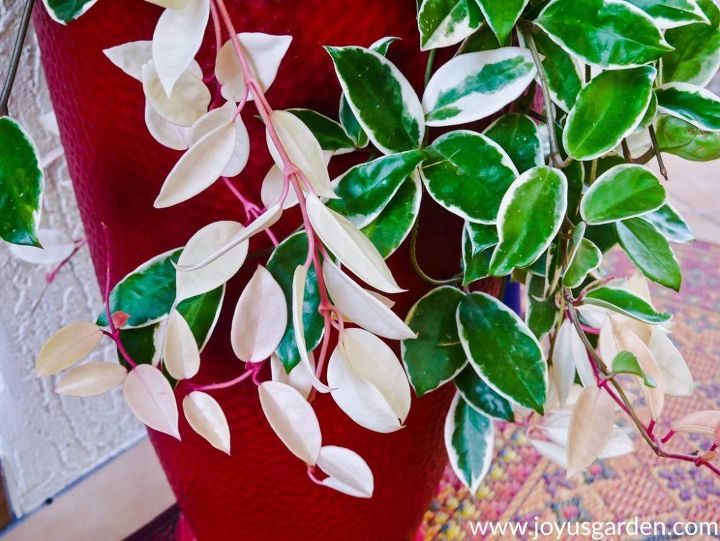





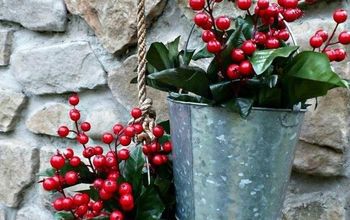





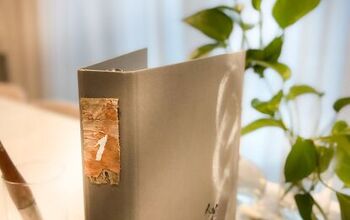







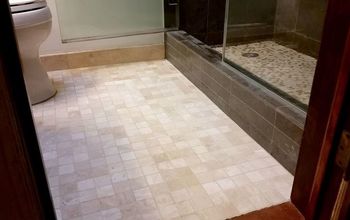


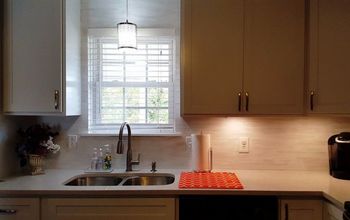
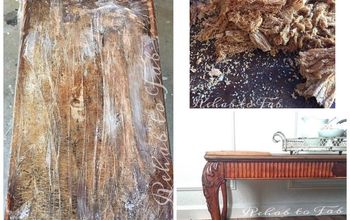



Frequently asked questions
Have a question about this project?